“I still consider myself a student,” says Martin Scorsese, eyes shimmering with humility and happiness born from a fascination with all that has come before him and all that may come after. At Film Forum’s “Scorsese Non-Fiction” retrospective running through Tuesday December 17th, devotion to his forebears is palpable within the passion he incarnates from behind the camera and in front of it.
“It’s the expression of the human soul,” he divulges as the reason both for initially wanting to enter the priesthood and for the outright urge to become a filmmaker. “I don’t see a conflict,” he continues, “between the sacred and the profane,” priesthood and directing, church and cinema. “It’s a great quest for common understanding.”
It’s an outlook that forges a synthesis out of what mythology and religion scholar Joseph Campbell considered the difference between a priest and a shaman; the former being a contemplative academic, the latter being someone who has had an experience which may be related to others. With Scorsese’s decades-long extrapolation of his own body of work as an exploration of his Catholic upbringing, his remarks evoke the very hypostasis at the center of Catholic theology: the word of the creator become flesh through one man, one with all in spirit. This is how Scorsese sees directing. This is Cinema.
Or, to use a term I first heard from film scholar Jim Emerson, it’s “philosophy becoming visceral sensation”. Is there a more elemental description of Charlie holding his hand to the flame in “Mean Streets”, Travis’s vigilantism in “Taxi Driver”, the portrayal of Jesus’s crucifixion in “Last Temptation”, the nocturnal odysseys to find sanity and salvation in “After Hours” and “Bringing Out the Dead,” or “Silence”‘s seventeenth century Father Rodrigues stepping on a holy Christian image so as to end the suffering of others? It’s a kinetic through-line in his narrative fiction whose inspirations are evoked, explained, and illustrated in the documentary, “A Personal Journey with Martin Scorsese through American Movies” showing in the retrospective, co-written and directed by Scorsese for British television.
Scorsese and Michelangelo may be the two most apt examples of such overtly Catholic Italian artists whose spiritual devotion catalyzes their work while being so popularly and critically acclaimed in their own lifetimes. Indeed, Scorsese encourages directors to do as did the painters and sculptors of yore who studied the work of previous artists; for the directors who influenced him were those he considers the masters of cinematic language as well as smugglers who he claims, “were cheating and getting away with it.”
A discourse on inspiration through craft, “A Personal Journey” is a de facto eclectic sermon on the great dichotomy of cinema as commercial art form. “Even today I still wonder,” he says, “…what does it take to be a professional, or maybe even an artist in Hollywood? How do you survive the constant tug-of-war between personal expression and commercial imperatives?”
He starts with the early mogul-dominated era when a director learned his craft as one hired hand in a studio’s assembly line of production, which served as an opportunity to become an expert of his trade over the course of directing as many as three pictures a year through the pipeline over decades.
Paradoxically, Scorsese shows a clip of legendary director Frank Capra, finger pointed sternly skyward while he insists, “I believe one man, one film,” underscoring the fertile ground for tension within the vertically integrated system of labor at a time when a successful director had to adjust to the style of the particular studio on a production that was initially the baby of a producer like David O. Selznick who might re-write the script from day to day, hanging over the director’s shoulder on set. At least in Selznick’s case, it might appear to be sourced from a personal enthusiasm for a production in particular and for cinema in general, which alludes to one criticism Scorsese had in his recent public argument regarding today’s prevalent studio fare, which he claims is anything but personal cinema.
“I couldn’t accept art as done by committee,” Capra continues. This from the director of such crowd-pleasing studio pictures from the Hollywood Golden Age as “Mr. Smith Goes to Washington” and “It’s a Wonderful Life”. I assume it means that as much as he was beholden to the studio’s hierarchy, Capra nonetheless determined to shape a picture through his own vision. Hence, Scorsese’s label of some masters as smugglers; his comparison of good genre films to Jazz variations. “Genres were never ridged,” he says. “Creative filmmakers keep stretching their boundaries. Personal expression was stimulated, rather than inhibited, by discipline.”
Poignant, that Scorsese was influenced by works honed by said discipline within a studio system that had collapsed by the time he started making films; a new era in which moguls were replaced by agents and executives. A great conversation might be had between Scorsese and whoever is today’s equivalent of Capra, whose body of work has been considered a measure of how the country saw itself in his time. So what does the work of whoever is directing mega-budgeted studio fare today say about America right now?
“From the beginning,” Scorsese admits, “I saw film as a means of self-expression. My passion was fueled by all sorts of famous and infamous films.” Casting the first, immediate impression on him was “Duel in the Sun” from 1946, in which the two central and forbidden lovers shoot each other dead, dying in each other’s arms (Scorsese will spoil this and other endings in the documentary if you don’t read it from me first.) When he saw it as a four-year-old, the picture was condemned by the Catholic Church, and his desire to see it was a handy excuse for his mother to as well.
He elucidates the thread connecting films like 1939’s “The Roaring Twenties” to his own “Goodfellas” over fifty years later in its depiction of a gangster’s fall from what he perceived to have been grace. “Raoul Walsh went so far as to end it on a Pietà image,” he says, comparing the final shot of bottomed-out bootlegger James Cagney dying in the arms of Priscilla Lane to the sculpture of a mourning Mary holding her dead son Jesus, which made Michelangelo an overnight sensation over five hundred years ago.
But his analysis of cinema is more than Jungian or psychoanalytic. He observes that silent film was like music, describing F.W. Murnau’s “Sunrise” from 1927 as visions rather than plot. “Cinema’s dreamlike nature ended with sound,” he says, “but the sound era ushered in heightened reality,” which lead to fairy tale-like grandeur. “Any reality,” for example, “could be crafted into a ballet during the zenith of the musical.” Eventually, more unsavory elements of the human id were explored as well, in films centered on the common man falling into a trap or succumbing to vice. Hitchcock made an entire career centered on such themes. But it was indicative of an America whose notion of itself was not as simple as powers-that-be might suggest.
“There’s no reprieve in noir,” says Scorsese, “You pay for your sins.” Cinema eventually began to show how American values of family and enterprise could be twisted into a perversion of themselves. He points to 1947’s “I Walk Alone” with Burt Lancaster and Kirk Douglas, whose gangster is now depicted as a corporate leader. Directors were showing what Scorsese describes as “landscapes of moral conflicts. It’s the world that’s messed up,” which he believes culminated in “The Godfather”, in which the organization is a state within the state, and the gangster is CEO. To many, that may sound like the state of American culture today, including its politics. If the people abdicate the processes of free democracy, might high cinema rise again in its stead?
That is still possible, if you have the faith of Martin Scorsese. “We are all children of Griffith and Kubrick,” he says, explaining how circa 1915 the studio thought D.W. Griffith’s innovative use of crosscutting in the silent films “Birth of a Nation” and “Intolerance” would confuse the audience, and how the latter, without even a script, nevertheless successfully interweaves stories from four different centuries visually. “It’s a symphony,” says Scorsese, “devoted to one idea: victims of history.” Meanwhile, crosscutting became basic cinematic language.
Scorsese asserts that Stanley Kubrick’s “Lolita” in 1962 was “not smuggled, but open defiance.” He’s talking of defiance as an exploration of social norms as depicted within an art form. When the Catholic Church protested Scorsese’s depiction of Christ’s inner conflict as man (though the Church believes Jesus to be man equally as much as He is God), why was it radical to understand it as a deeply-considered exploration? Then again, exploration of truth, as apposed to suggesting one owns the truth, long ago become a defiant act.
He describes Kubrick’s “2001: A Space Odyssey” as simultaneously a big budget effects and experimental art film, then ponders whether we’ve reached the end of true cinema or the dawn of a new one with digital ones and zeros replacing the chemical process of developing an image from light having shone through celluloid. “Whether an effect is big or simple it doesn’t matter,” he says, “…what matters is its vision.”
Even in his recent public argument regarding current standard studio productions as rehashed IP, Scorsese re-iterates that Hollywood craft is second to none. It is, therefore, the vision that would be most telling of the nature of American cinema today. What is a particular motion picture not only about, but how does it go about it? What are the dimensions of a particular picture’s reason for, and realization of, being? It’s a question humanity has often asked of itself.
According to Scorsese, “Bonnie and Clyde” and the Wild Bunch” in the late 1960’s ended the Hollywood Production Code of alleged ethics, at least in regards to violence. He suggests there may still be voluntary censorship of sexuality in American cinema, through which he dares to declare one may find the core of human psyche. Included, is a clip of John Cassavetes, whom many consider the father of modern American independent film, who informs us, “What everybody needs is a philosophy. It’s Psychology. So characters need to experience what life is about. I have a one track mind. It’s all I’m interested in: love”.
Scorsese concedes, “I can only talk to you about what has moved me or intrigued me.” Cinema, he says, “it’s an imaginary museum and we just can’t enter every room.” The scope of Scorsese’s devotion to his art form, his intrigue in where it’s been and where it might go, his faith in what it says, or better yet, dares to ask, about us, brings to my mind something written by Giuseppe Mazzini, the philosophical soul behind the unification of the modern Italian nation state: “Love and faith create a desire to reach truth step by step. Create the future, of which the living symbol is the child, the link between us and the generations to come.”
That is an ethos showcased in Film Forum’s retrospective, evoked in Scorsese’s documentary explorations of art and documentary autobiographies. He shot “The Neighborhood” in Little Italy after the attacks of September 11th, 2001. As a kid, he says, “My point of view was from the third floor looking down. Maybe the roof was God’s point of view.” The Italian immigrant experience has been perhaps the most mythologized yet taken for granted, which is a shame in a national landscape built on immigrant history, and its history in the making; that’s whether you came on the Santa Maria, the Mayflower, the Andrea Dorea, in chains, on a plane or through the desert.
“I wondered,” Scorsese says, “why an Italian neighborhood had a cathedral named after St. Patrick.” Then, of course, he understood. “We weren’t the first ones here.” The Irish neighborhood became his Italian one, which is now populated by the Chinese. And the American story continues, in cinema and in its living ethnic tapestry. Spanish Harlem? That used to be Little Italy. Scorsese can’t help but smile. “I want to say New York,” he says, “and America comes out.”
In “ITALIANAMERICAN” he interviews his parents in their apartment around 1974, starting with his mother explaining how to make her sauce. Actually, with him asking her how to make it, as did her mother before her. We listen as she explains her immigrant father was a scaffold maker, her mother cleaned their clothes by boiling them in the kitchen. At fourteen years of age her brother went to work to help support the family as a messenger for American standard bearer of achievement and prosperity, J.P. Morgan.
How might young people of their generation amuse themselves? Some “would go from restaurant to restaurant,” says his father, “people used to come to the house and tell stories. They’d keep you on your toes.” He says this at the family dinner table to his attentive son whose body of work to date may have yet to include anything beyond “Who’s That Knocking at My Door?”, “Boxcar Bertha”, and “Mean Streets”; motion pictures which were, respectively, a showcase for his own style which would become part of the taken-for-granted cinematic language of the decades to follow, an auteurist exploitation film, and in his first collaboration with De Niro a benchmark of what is now considered the American New Wave.
They look at old photos of family and of Sicily. His mother shows one of a fountain adorned with nude sculptures. “This is Piazza di Vergogna,” she says. “The Piazza of Shame. On account of the naked statues.” She puts the photo away then grins, “I thought they were terrific.” Reminiscing on their own parents’ later years, they tenderly lament former homes, once alive but eventually abandoned, or their differences in recollection of how Italians in the neighborhood made wine in their cramped apartments. Nevertheless, their son asks the questions about their shared past, which of course created his future. It seems, his father says, evoking his own departed loved ones, “Your father and mother build it up, then there’s no one to take care of it.”
A couple years ago I caught an exhibition on Martin Scorsese at the Museum of the Moving Image, which included objects you’d expect or hope to get a peak of, like a working script of “Taxi Driver” with De Niro’s notes scribbled in the margins, behind the scene photos on sets, correspondence between Scorsese and his legendary peers. As an ITALIANAMERICAN, I found it both telling and inevitable, my own heart warmed, to see that he also put on exhibit his family’s entire dinner table. Being Italian, Italian American, an artist, a director of cinema, is in fact, a movable feast, and what’s more? “The story,” Scorsese says, “really has no end.”
ABOUT GIÒ CRISAFULLI:
Giò Crisafulli is writer/director of “Children of God” which he is producing with Melissa Batista at Zio Ciccio Cinema, in which an actor who’s the son of a priest and nun is on the verge of stardom while having an affair with a painter from Italy. A sensational and intuitive look into the romance of two people, it will show how any relationship can be a fleeting microcosm of one’s life.
Check out Giò’s interviews at Lincoln Center’s Opens Roads New Italian Cinema:

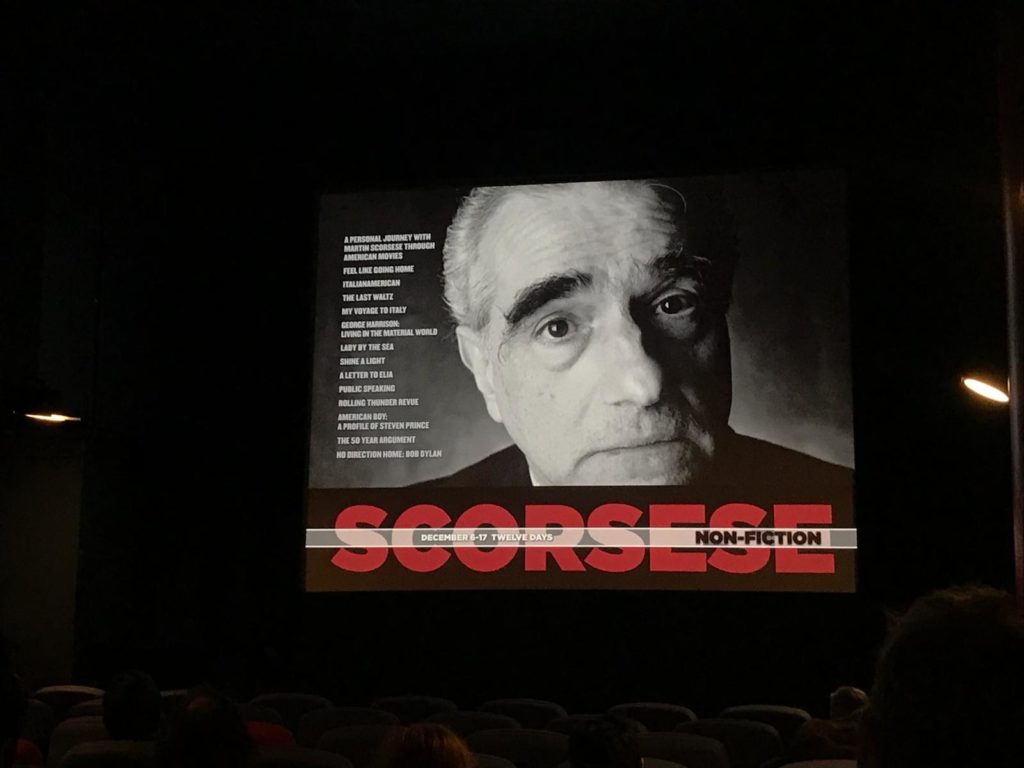

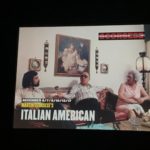
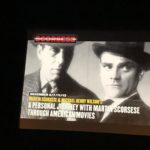
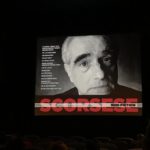
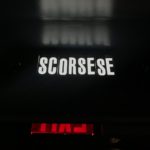



It is my belief that great film criticism not only informs a reader’s choices, but helps to expand their appreciation of the medium in general. Roger Ebert’s writing has always done that for me, and this article has a similar effect. In an age where mainstream cinema seemingly aspires to impersonal mediocrity, it can be easy to lose sight of the art form’s full potential. As a fellow Italian American, it is nice to be reminded of our myriad contributions to popular culture.
Thank you for reading, Adrian, and for your appreciation of our continued effort to inform, discover, and promote our piece of the American pie. Each ethnic group is a flower in the bouquet of the American experience, and we’re proud to have a voice at the table.
This article was truly enlightening and thoroughly engaging. For me, writings about any art form tend to fall into one of two categories: those that reflect the author’s love and enthusiasm for the art form, or on the other hand, those that mainly put on display the writer’s sense of self-importance. I seldom get very far into the latter.
What comes through most potently in your article is the idea that art at its best is inescapably rooted in our humanity. It necessarily has a point of view. This, to me, is what allows us to connect with it.